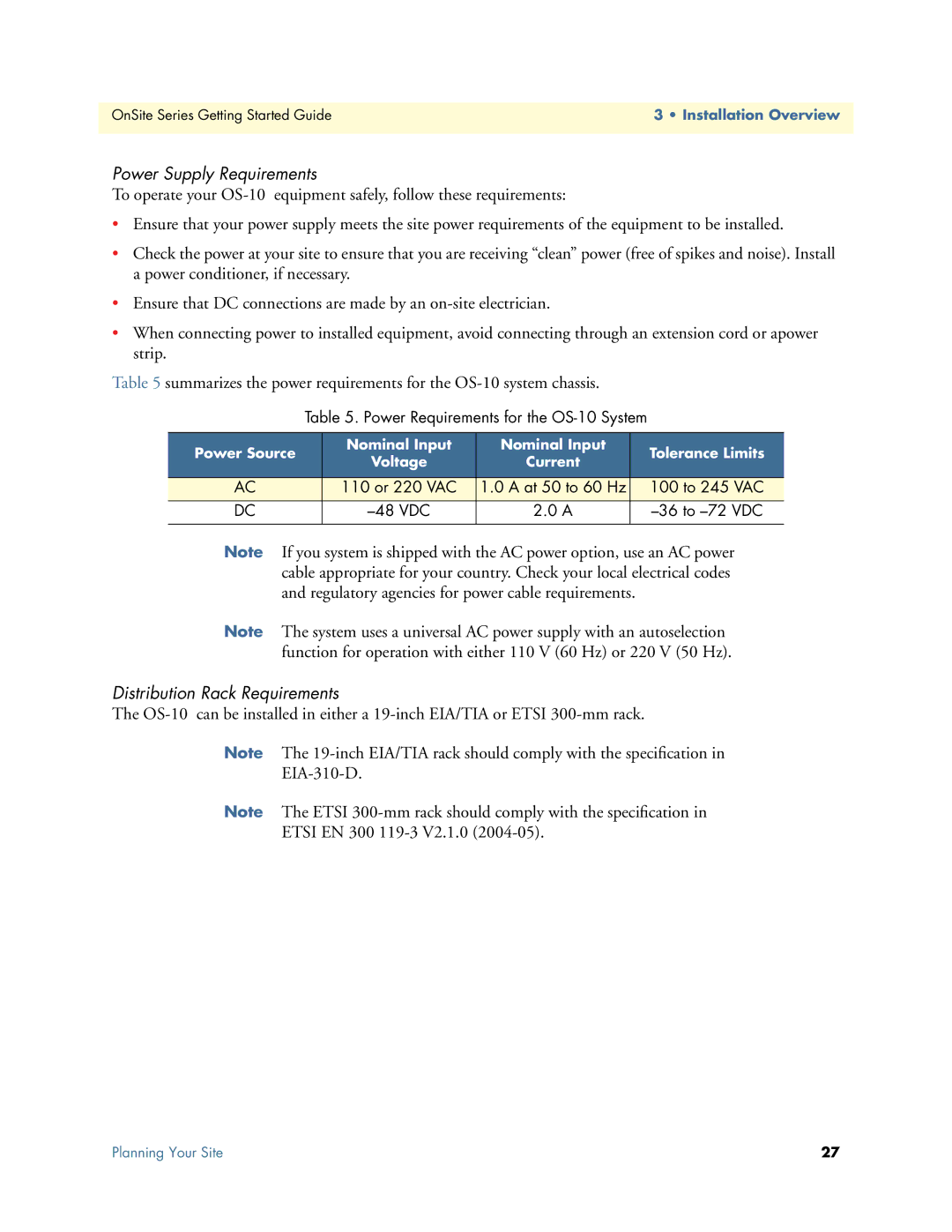
OnSite Series Getting Started Guide | 3 • Installation Overview |
|
|
Power Supply Requirements
To operate your
•Ensure that your power supply meets the site power requirements of the equipment to be installed.
•Check the power at your site to ensure that you are receiving “clean” power (free of spikes and noise). Install a power conditioner, if necessary.
•Ensure that DC connections are made by an
•When connecting power to installed equipment, avoid connecting through an extension cord or apower strip.
Table 5 summarizes the power requirements for the
Table 5. Power Requirements for the
Power Source | Nominal Input | Nominal Input | Tolerance Limits | |
Voltage | Current | |||
|
| |||
|
|
|
| |
AC | 110 or 220 VAC | 1.0 A at 50 to 60 Hz | 100 to 245 VAC | |
|
|
|
| |
DC | 2.0 A | |||
|
|
|
|
Note If you system is shipped with the AC power option, use an AC power cable appropriate for your country. Check your local electrical codes and regulatory agencies for power cable requirements.
Note The system uses a universal AC power supply with an autoselection function for operation with either 110 V (60 Hz) or 220 V (50 Hz).
Distribution Rack Requirements
The
Note The
Note The ETSI
ETSI EN 300
Planning Your Site | 27 |
